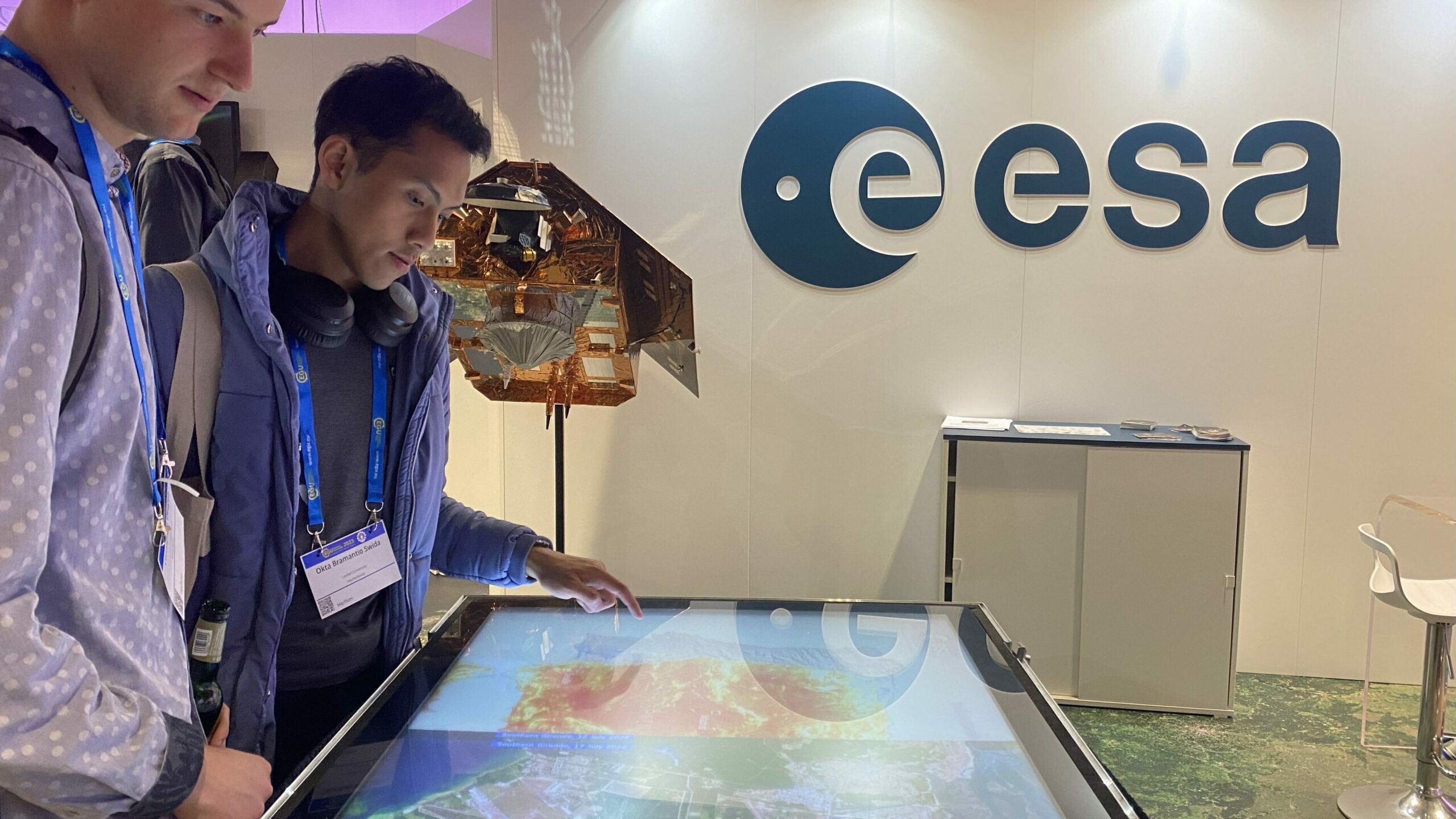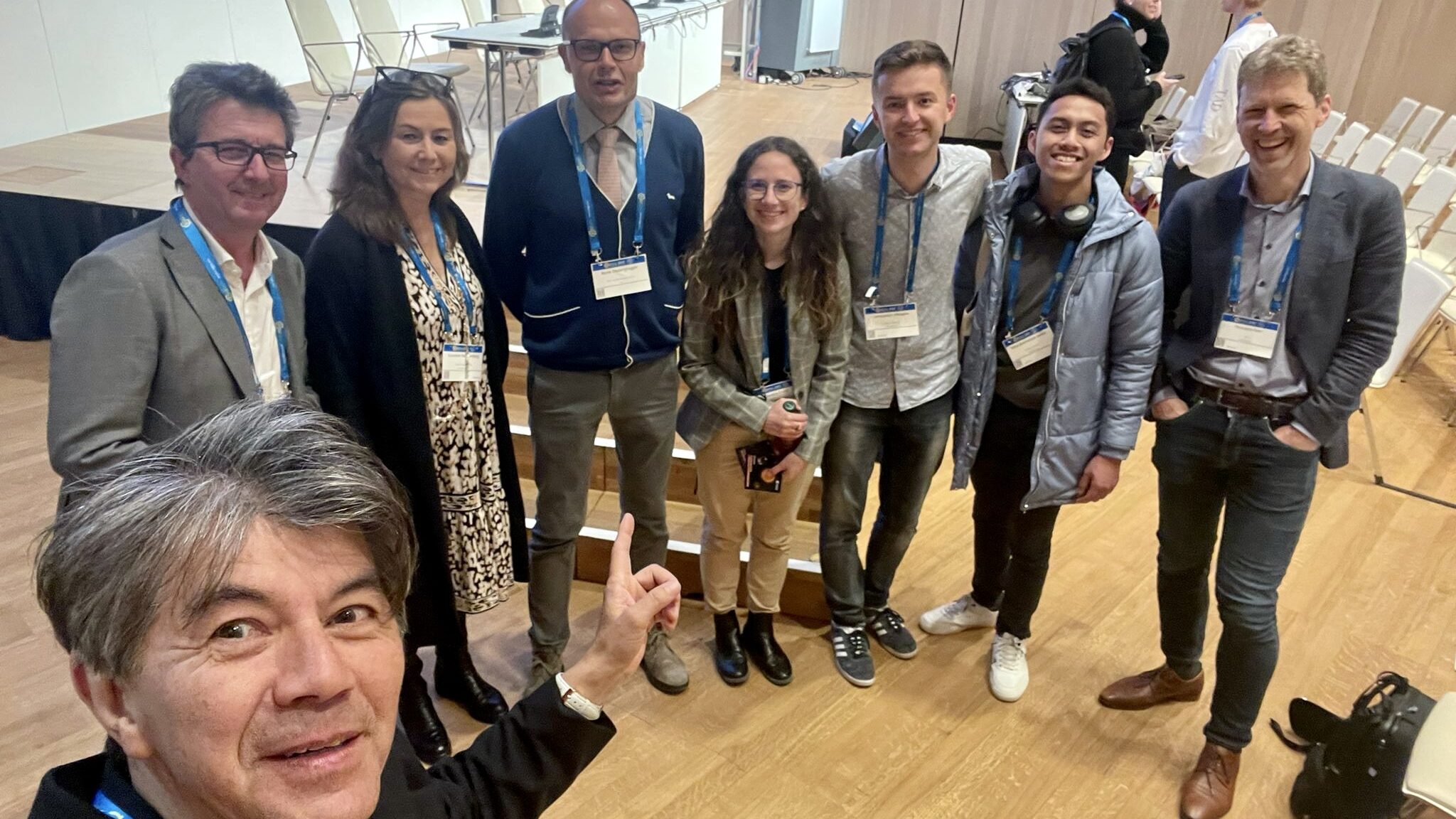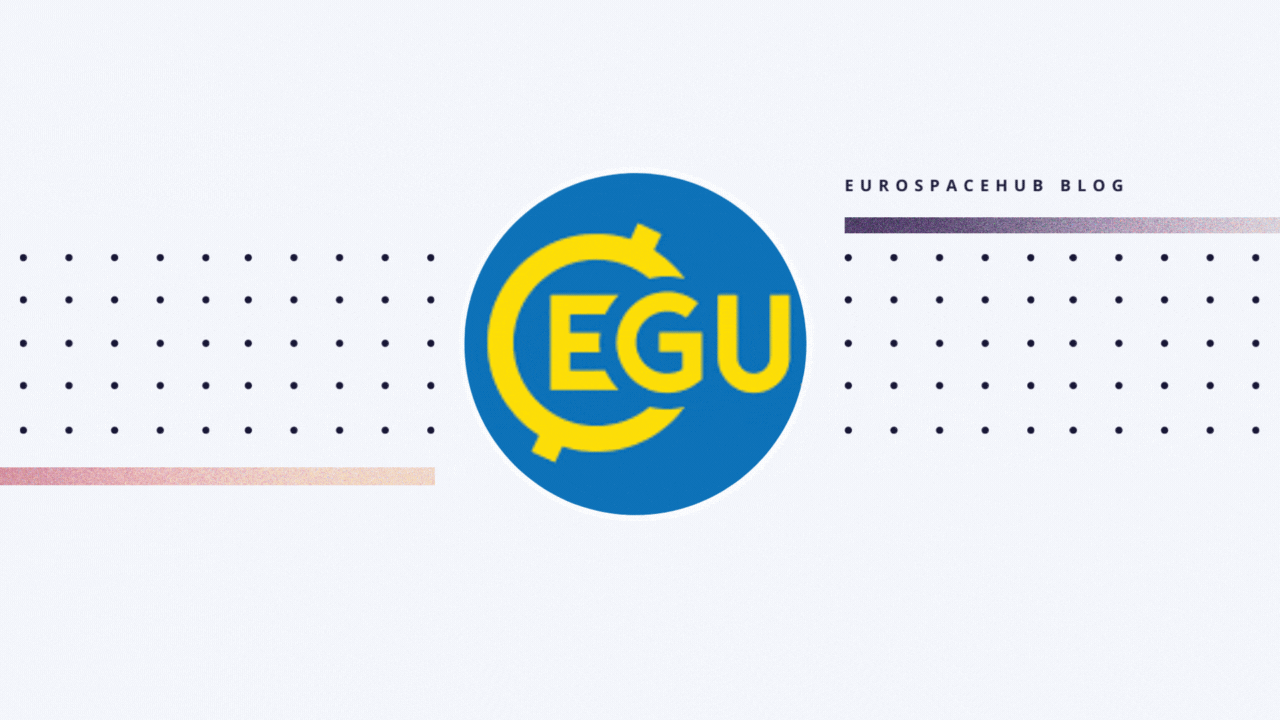EuroSpaceHub is enthusiastically participating in the EGU 2023 Conference this week, April 24-28! Held annually in Vienna at the Austria Center Vienna (ACV), the conference is the General Assembly organized by the European Geosciences Union (EGU). As it has become common practice post-pandemic, the conference is taking place in a hybrid format, with international participants connected remotely. The EGU General Assembly has taken place since 2004, bringing together scientists and students from different fields. The European Geoscience Union (EGU), which gives the conference its name, was formed in 2002, as a merger between the European Geophysical Society (EGS) and the European Union of Geosciences (EUG).
Our EuroSpaceHub “task force” flew to Vienna for this event and will be very busy on site this week. In fact, our EuroSpaceHub consortium plays an active role in the conference program, where Prof Bernard Foing (Lunex partner) is responsible for an entire session of oral presentations and a poster session. The session is entitled “Open Session on Planetary Instrumentation and Data Techniques”. Chaired by Prof Foing, it will be held in hybrid form on Thursday, the 27th, from 2:00 p.m. to 5:55 p.m., and it will be anticipated by the in-person and virtual poster session in the morning. Research results to be presented during the session will include those of students and representatives of the EuroSpaceHub Academy. We particularly highlight the presentation of research results by two Master’s students, Constantijn Vleugels and Okta Swida, affiliated with the EuroSpaceHub Academy, in an oral presentation entitled “A comparison of Perseverance rover and HiRISE data: siteinterpretations in Jezero Crater” (C. Vleugels, B. Foing, O. Swida). Another talk entitled “Mars Perseverance Panoramic Image for Self-Determination Mission Algorithm” (O. Swida, B. Foing, and C. Vleugels) will take place instead on Tuesday morning.
The results of the analog mission program of the EuroSpaceHub Academy will be presented in a dedicated presentation entirely focused on the initiative, which will be given by Serena Crotti (EuroSpaceHub / Lunex Communication Team), entitled “Training the future Space Entrepreneurs and Astronauts: the experience of the EuroSpaceHub Academy with the Analog Missions for validation of planetary instruments, protocols and techniques” (S. Crotti, J. Pascual, B., A. Kołodziejczyk, B. Reymen, I. R. Perrier, H. Rogers, S. Pavanello, C. Avila Rauch, G. De La Torre, and A. Wedler). There will also be no shortage of posters dedicated to the project in the poster session on Thursday morning, including one entitled “ILEWG/LUNEX EuroMoonMars & EuroSpaceHub Academy: Recent Highlights” (B. Foing, H. Rogers, S. Crotti, J. Pascual and the ILEWG LUNEX EuroMoonMars Team and EuroSpaceHub Academy).
So… let’s find out together the highlights from yesterday, our first day at the conference!
For our EuroSpaceHub delegates, the day started with a highly interactive morning session, a workshop entitled “How to build and grow your scientific network”. The session’s audience consisted mainly of Early Career Scientists, more specifically PhD students. The three speakers (A. Kvas, M. Holdt, R. Steffen) kicked off by sharing their experiences as scientists looking for contacts when moving their first steps as professional and post doctorates. Two highly interactive moments took place during the workshop, in the format of two conversational exercises to encourage networking with colleagues in the audience. The participants also asked many questions and suggested topics for collective discussion, which were very useful for us to learn more about the struggles that young scientists face when building their network. Thanks to the moment of sharing, we had the chance to show them how our EuroSpaceHub digital platform can be a game changer in breaking down barriers during the networking process. The session was a great opportunity for us to show the young people concretely how the EuroSpaceHub platform can be an incredibly effective digital tool to help them build their network and forge new collaborations.
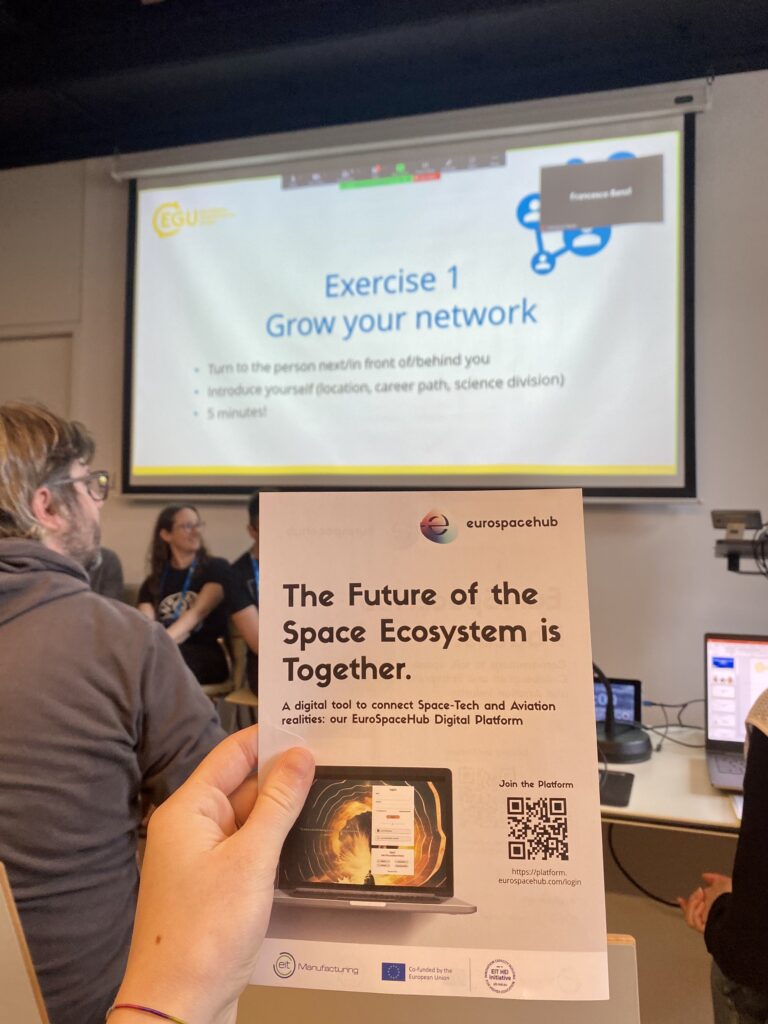
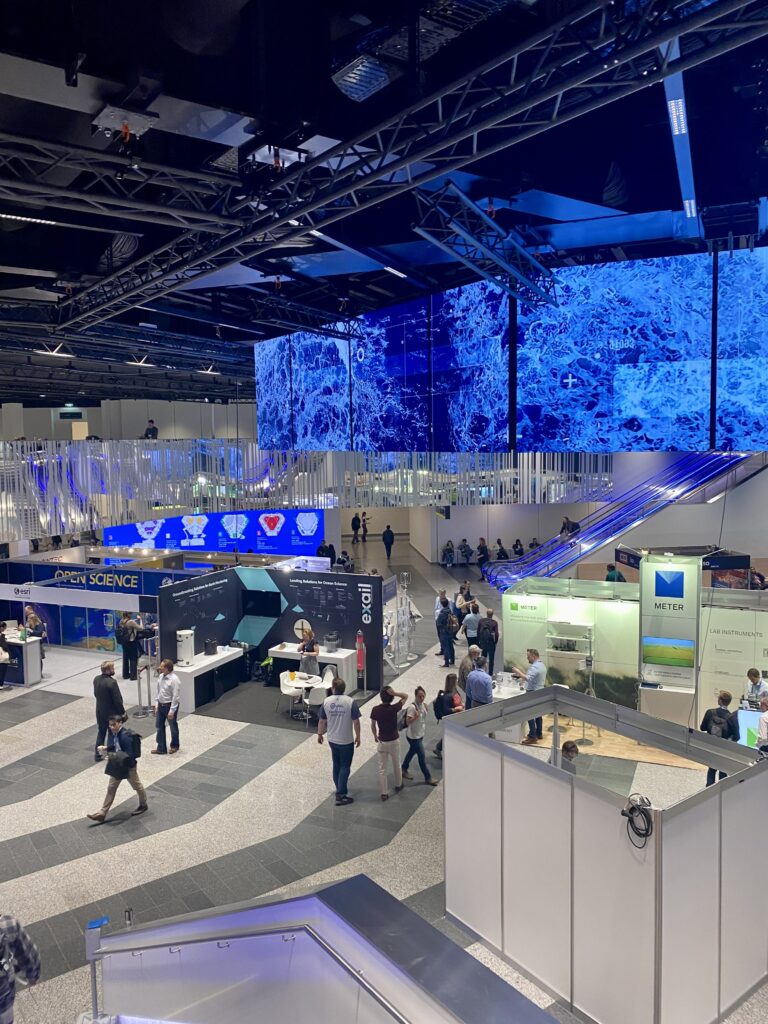
The day continued with a plenary session that focussed on administrative issues of the organization. Among the technical topics covered were business topics, including auditing the budget and the prospectus for allocating resources in the coming period. A warm welcome was also given to the Union’s next president, the brilliant scientist Irina Artemieva. Irina M. Artemieva is a Russian planetary scientist, also professor at the GEOMAR Helmholtz Centre for Ocean Research Kiel. During the break, we managed to interview her for our social media accounts. So… Stay tuned, we will post soon on our @eurospacehub Instagram page the short interview we conducted! In particular, we asked her what prospects and opportunities exist for young scientists at this edition of EGU 2023.
Over the course of the afternoon, our on-site crew split up to cover different sessions, ranging from technical-scientific to communication & outreach. It was very fascinating to follow the talk “Is Social Media outreach?” in which several scientists shared their views of using social media – from instagram to LinkedIn and Twitter – to communicate scientific notions to the public. The discussion really offered a lot of insights, making the audience think about the social responsibility that scientists must have on social media accounts, on the one hand, and the risks and opportunities of doing science with these new technologies, on the other. We were impressed to see the variety of topics that are scheduled in the program for this edition of EGU 2023 and look forward to finding out what the program has in store for us in the coming days!
For our team, the day ended with a very interesting panel organized by ESA and titled “Space for our Climate.” During the evening session, ESA speakers showed the contribution and great efforts of ESA in the branch of Earth Observation and in particular on climate issues, so close to us today. At the event we were able to exchange views and meet the heads of ESA Earth Science and Applications divisions and the Head of the Climate Office.
